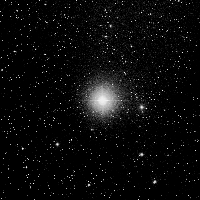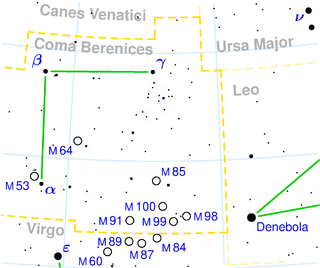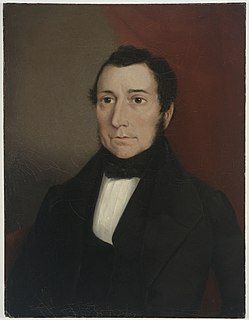Related Research Articles
In observational astronomy, a double star or visual double is a pair of stars that appear close to each other as viewed from Earth, especially with the aid of optical telescopes.
Willem Hendrik van den Bos was a Dutch astronomer who worked at the Union Observatory in South Africa and became its director in 1941. He discovered nearly 3000 new double stars, made more than 71000 astronomical measurements and compiled a catalogue of Southern hemisphere double stars. He computed the orbits of more than 100 double stars using a method he invented and which later became the accepted standard.

Alpha Andromedae, officially named Alpheratz, is located 97 light-years from the Sun and is the brightest star in the constellation of Andromeda. Located immediately northeast of the constellation of Pegasus, it is the upper left star of the Great Square of Pegasus.

Alpha Comae Berenices is a binary star in the constellation of Coma Berenices, 17.8 parsecs (58 ly) away. It consists of two main sequence stars, each a little hotter and more luminous than the Sun.

Gamma Andromedae is the third-brightest point of light in the constellation of Andromeda. It is a multiple star system approximately 350 light-years from the Earth.

Delta Capricorni is a multiple star system about 39 light-years away in the constellation of Capricornus. The primary star in the system is a white giant and the combined light of its members makes it the brightest star in the constellation.

The Washington Double Star Catalog, or WDS, is a catalog of double stars, maintained at the United States Naval Observatory. The catalog contains positions, magnitudes, proper motions and spectral types and has entries for 141,743 pairs of double stars. The catalog also includes multiple stars. In general, a multiple star with n components will be represented by entries in the catalog for n-1 pairs of stars.

Eta Andromedae is a spectroscopic binary star in the constellation of Andromeda. It consists of two G-type subgiant or giant stars orbiting each other with a period of 115.7 days and has an overall apparent visual magnitude of approximately 4.403.
36 Andromedae is a visual binary star system in the northern constellation of Andromeda. The designation is from the star catalogue of English astronomer John Flamsteed, first published in 1712. It is faintly visible to the naked eye with an apparent visual magnitude of 5.45. An annual parallax shift of 26.33 mas yields a distance estimate of about 124 light years. The system is moving closer to the Sun with a radial velocity of −0.8 km/s.

James Dunlop FRSE was a Scottish astronomer, noted for his work in Australia. He served as astronomer's assistant who was hired by Sir Thomas Brisbane to work at his private observatory, once located at Paramatta, New South Wales, about 23 kilometres (14 mi) west of Sydney during the 1820s and 1830s. Dunlop was mostly a visual observer, doing stellar astrometry work for Brisbane, and after its completion, then independently discovered and catalogued many new telescopic southern double stars and deep-sky objects. He later became the Superintendent of Paramatta Observatory when it was finally sold to the New South Wales Government.
The Aitken Double Star Catalogue, or ADS, is a star catalogue of double stars. It was compiled by Robert Grant Aitken and published in 1932 in two volumes, under the name New general catalogue of double stars within 120° of the North Pole. It contains measurements of 17,180 double stars north of declination −30°. Entries in this catalogue are generally referred to by an index number prefixed with the letters ADS.

23 Vulpeculae is a triple star system in the northern constellation of Vulpecula. It is visible to the naked eye as a faint, orange-hued star with an apparent visual magnitude of 4.52 and it is located approximately 340 light years away from the Sun based on parallax. The system is moving further from the Earth with a heliocentric radial velocity of +1.47 km/s.
Pi Cephei is a trinary star located in the constellation Cepheus. With a combined apparent magnitude of about 4.4, the system is faintly visible to the naked eye. The inner pair of stars orbits in 1.5 years while the outer companion completes one orbit in about 160 years.

Alpha Doradus is the brightest star in the southern constellation of Dorado. The distance to this system, as measured using the parallax method, is about 169 light-years.
Alpha Microscopii (α Microscopii) is a star in the southern constellation of Microscopium. It is visible to the naked eye with an apparent visual magnitude that varies between 4.88 and 4.94. Based upon an annual parallax shift of 8.2214 mas as seen from the Earth, it is located 400 ± 30 light years from the Sun. The star is moving nearer to the Sun with a radial velocity of −15 km/s.
The Burnham Double Star Catalogue (BDS) is a catalogue of double stars within 121° of the celestial North Pole. It was published in two parts by the Carnegie Institution of Washington in 1906, under the title A General Catalogue of Double Stars Within 121° of the North Pole. The first part gives coordinates, designations, and magnitudes for 13,665 pairs of double stars, comprising almost all double stars discovered before 1906. The second part contains measures, notes, and references to publications for each pair. Its publication was a stimulus to double star observation.
Beta Hydrae is a double star in the constellation of Hydra. Its overall apparent visual magnitude varies by 0.04 magnitudes with a period of 2.344 days, and is approximately 4.27 at maximum brightness. The brighter star in the double is a giant Bp star which has been classified as an α2 Canum Venaticorum variable.

1 Geminorum is a star in the constellation Gemini. Its apparent magnitude is 4.15.
HD 211073 is a triple star system in the northern constellation Lacerta, located around 580 light years from the Sun. It is visible to the naked eye as a faint orange-hued star with a baseline apparent visual magnitude of 4.50. The system is moving closer to the Earth with a heliocentric radial velocity of −11.7 km/s.
References
- ↑ pp. 723–724, The Observer's Guide to Astronomy: Volume 1, Patrick Martinez and Storm Dunlop, Cambridge University Press, 1994, ISBN 0-521-45898-6.
- ↑ Index catalogue of visual double stars, 1961.0, Hamilton M. Jeffers, Willem H. van den Bos, and Frances M. Greeby, Publications of the Lick Observatory, Mount Hamilton: University of California, Lick Observatory, 1963, Bibcode : 1963icvd.book.....J.
- ↑ The Washington Double Star Catalog Archived 2008-09-17 at the Wayback Machine , Brian D. Mason, Gary L. Wycoff, and William I. Hartkopf, astrometry department, United States Naval Observatory; accessed on line July 22, 2008.
| This astronomical catalog article is a stub. You can help Wikipedia by expanding it. |